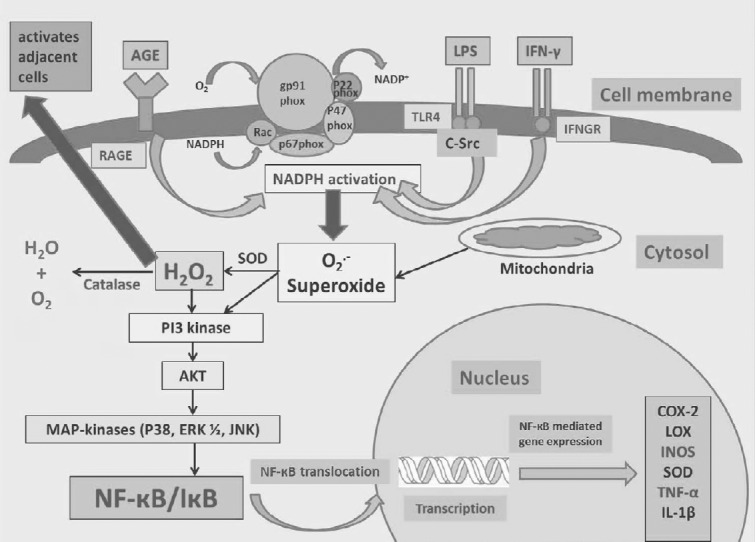Figure 1.

Signal pathways involved in LPS, IFN-γ, and CEA-AGE induced proinflammatory mediator expression via hydrogen peroxide
After binding to their respective receptors, LPS, IFN-γ, and AGEs lead to the activation of NADPH oxidase and subsequent superoxide production and conversion to hydrogen peroxide. ROS activate downstream signaling pathway components including PI3K/Akt and MAPK. Subsequently, MAPK (p38, ERK 1/2, and JNK) activation induces the phosphorylation of NF-κB. Hydrogen peroxide can also travel through the membrane into the extracellular space and activate adjacent cells. LPS: Lipopolysaccharide; IFN-γ: Interferon-gamma; NADPH: nicotinamide adenine dinucleotide phosphate; ROS: reactive oxygen species; PI3K: phosphoinositide-3-kinase; MAPK: mitogen-activated protein kinase; ERK1/2: extracellular-signal-regulated kinase 1/2; NF-κB: nuclear factor kappa B; JNK: c-Jun N-terminal protein kinase; COX-2: cyclooxygenase-2; LOX: lysyl oxidase; iNOS: inducible nitric oxide synthase; SOD: superoxide dismutase; TNF: tumor necrosis factor; IL: interleukin; IκB: inhibitor of NF-κB; CEA-AGE: chicken egg albumin-derived advanced glycation end product; RAGE: receptor for AGEs; IFNGR: interferon-gamma receptor.
